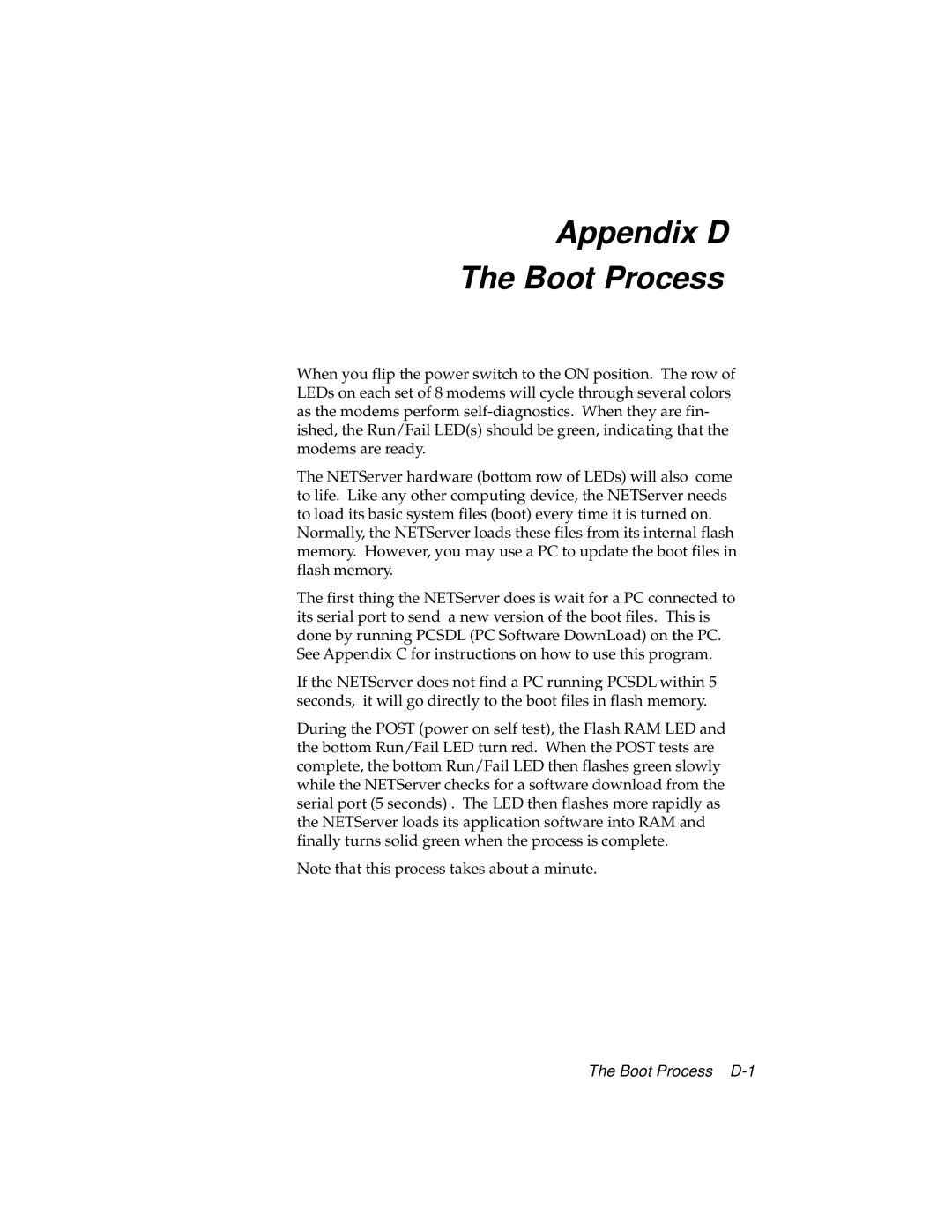Appendix D
The Boot Process
When you flip the power switch to the ON position. The row of LEDs on each set of 8 modems will cycle through several colors as the modems perform
The NETServer hardware (bottom row of LEDs) will also come to life. Like any other computing device, the NETServer needs to load its basic system files (boot) every time it is turned on.
Normally, the NETServer loads these files from its internal flash memory. However, you may use a PC to update the boot files in flash memory.
The first thing the NETServer does is wait for a PC connected to its serial port to send a new version of the boot files. This is done by running PCSDL (PC Software DownLoad) on the PC. See Appendix C for instructions on how to use this program.
If the NETServer does not find a PC running PCSDL within 5 seconds, it will go directly to the boot files in flash memory.
During the POST (power on self test), the Flash RAM LED and the bottom Run/Fail LED turn red. When the POST tests are complete, the bottom Run/Fail LED then flashes green slowly while the NETServer checks for a software download from the serial port (5 seconds) . The LED then flashes more rapidly as the NETServer loads its application software into RAM and finally turns solid green when the process is complete.
Note that this process takes about a minute.
